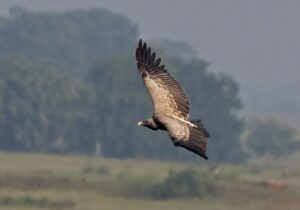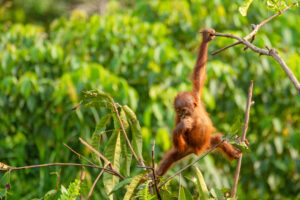A passion for the natural world drives many of our adventures. And when we’re not outside, we love delving into the discoveries about the places we live and travel. Here are some of the best natural history links we’ve found this week.
Stingrays make sounds: Naturalists long thought that stingrays were silent but new research shows that two species of stingrays actively produce sound.
Researchers analyzed videos from three different locations. From these videos, they identified an adult and juvenile mangrove whipray on the Great Barrier Reef, and an adult coastal stingray near Australia’s Heron Island, making noises.
“I couldn’t believe my ears when I first heard this loud click, clearly coming from the mangrove whipray I saw in the video. I started digging through the published literature and I couldn’t find anything describing this behavior, so I knew it was something unique,” marine scientist Joni Pini-Fitzsimmons said. The research team would like anyone who has seen or heard anything similar to get in touch.
Ancient mining
In pursuit of crystal hunters: Archaeologists are exploring a mine in the Swiss Alps that was first used in 8000BC. It is the region’s only known prehistoric crystal mining site.
In the Stone Age, hunter-gatherers would search the alps for crystals to turn into tools. In 2020, a member of the public came across several crystal shards, two pieces of antler, and some bits of wood. It might not sound like much, but the person made the discovery at 2,831m in the Alps, an elevation where you find very few animals or plants.
Historian Marcel Cornelissen has been studying these crystal mines for years and since September 2020 has been leading research in the Alps. Cornelissen dated the antlers to 6000BC and researchers believe ancient humans used them to extract quartz crystal.
The crystal mines project will end in December 2022. Currently, they are filling bags with rock samples from the top five centimeters of their excavation sites. “This is what people left behind. It’s what they didn’t want, and that’s what we’re taking. It’s not a tool or anything. It’s rubbish, the leftovers of the production process,” Cornelissen said.
Glowing oceans
Mysterious glow of ‘milky sea’ caught on camera: For centuries there have been reports of the sea turning white at night. Amongst the blackness of the ocean, sections seem to light up. The ‘milky sea’ phenomenon is only thought to happen a few times a year.
Scientists have never been able to study this phenomenon due to its sporadic nature but for the first time, it has been caught on camera. “It’s a really huge and kind of mysterious response in our biosphere. We’d like to know how it works, and how that might change in a changing climate,” atmospheric scientist Steve Miller said.
Miller has been chasing the mysterious glow for decades. Researchers believe that bioluminescent bacteria cause the phenomenon. But why they light up is unknown. Miller has been gathering satellite images and first-hand accounts to discover more. He published images from NOAA satellites in 2021 that showed images of milky seas south of Java, Indonesia. A crew member from a boat in the area saw this and got in touch. He had been there at the time and said it was “akin to glow in the dark stickers”.

A satellite image shows a 100,000km² bioluminescent milky sea south of Java, Indonesia. Photo: Steven Miller, Leon Schommer (photographer), and Naomi McKinnon, Australian National University, Canberra
A herp murder mystery
Thousands of frogs are dying in Australia: Across Australia, people are finding thousands of dead frogs. “It is a really complicated murder mystery,” herpetologist Jodi Rowley says. So far, no one knows why it is happening.
You are more likely to find dead frogs in winter because of the cold, but this event goes far beyond normal mortality rates. Frogs usually hunker down during winter to protect their immune systems. Now they are heading into the open and dying en masse. The team received over 1,600 reports from the public.
The reports detailed dozens of dead frogs appearing in houses and the public found over 40 species of frog. The phenomenon stopped over the summer, but as winter takes hold it has restarted.
“They’re cryptic, and they hide, but they’re out there in really huge numbers. If their populations change, there will be ripples throughout the food web,” Karrie Rose from the Taronga Conservation Society explained.
The little amphibians are indicators of ecosystem health, and this is not a good sign. Scientists are teaming up to try and solve the mystery.
Shipwrecked horses?
Oldest DNA from American horses links to folklore: Feral horses have lived on the island of Assateague for hundreds of years. How they got onto the island off the coast of Maryland is a mystery.
Folk stories describe the horses washing up there after the shipwreck of a Spanish galleon, and new evidence suggests this might be true. Nicolas Desol was analyzing the DNA of fossil cow teeth from an abandoned Caribbean colony on the island of Hispaniola. One of his specimens was completely different. It was a fragment from an ancient horse tooth.
Researchers excavated the tooth from one of Spain’s first colonial settlements on the island. The Spanish established Puerto Real in 1507 but became a piracy hub and the residents left in 1578. Cow remains are fairly common there, but horse remains are not. Desol compared the ancient horse DNA with that of modern horses. He expected it to be most similar to those from the Iberian Peninsula, but their closest relatives are the feral horses on the island of Assateague.
This new DNA evidence suggests Spanish explorers may have been the source of the horses on Assateague.

Assateague’s Wild Horses. Photo: National Park Services
Ancient footprints found during dinner
Footprints of world’s largest dinosaurs discovered in a Chinese restaurant: Palaeontologists have found the footprints of two sauropod dinosaurs in the outdoor courtyard of a restaurant in China. Scientists announced that they were created by the largest terrestrial species to have ever existed.
A customer at the restaurant saw the dents in the ground and contacted researchers. A team of paleontologists investigated the site and 3D scans showed that they are brontosaurus footprints, a species that lived during the Cretaceous Period.
The size of the footprints suggests the sauropods would have been around eight metres long. This is the first time dinosaur footprints have been discovered in Leshan, southwest China.






